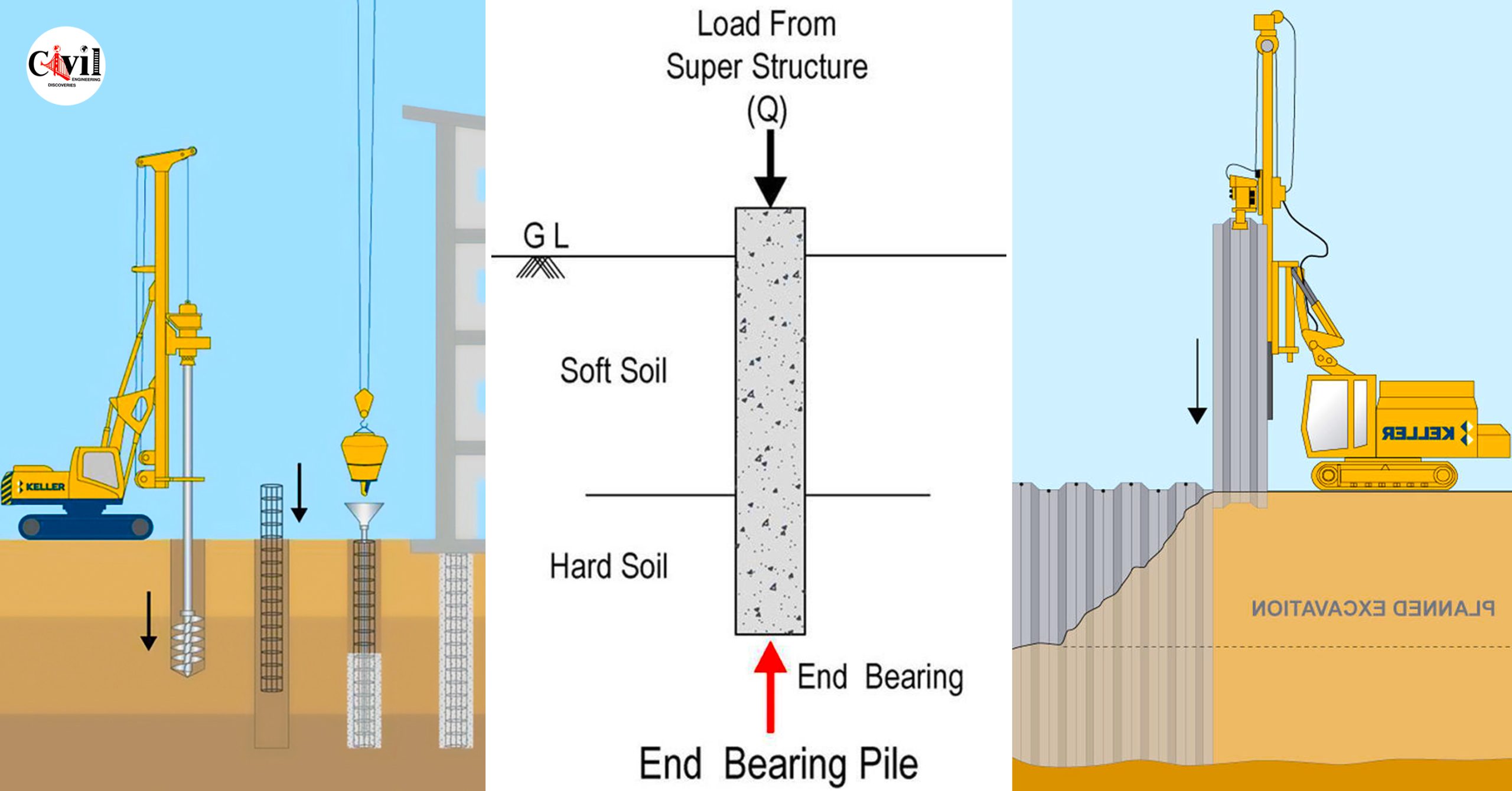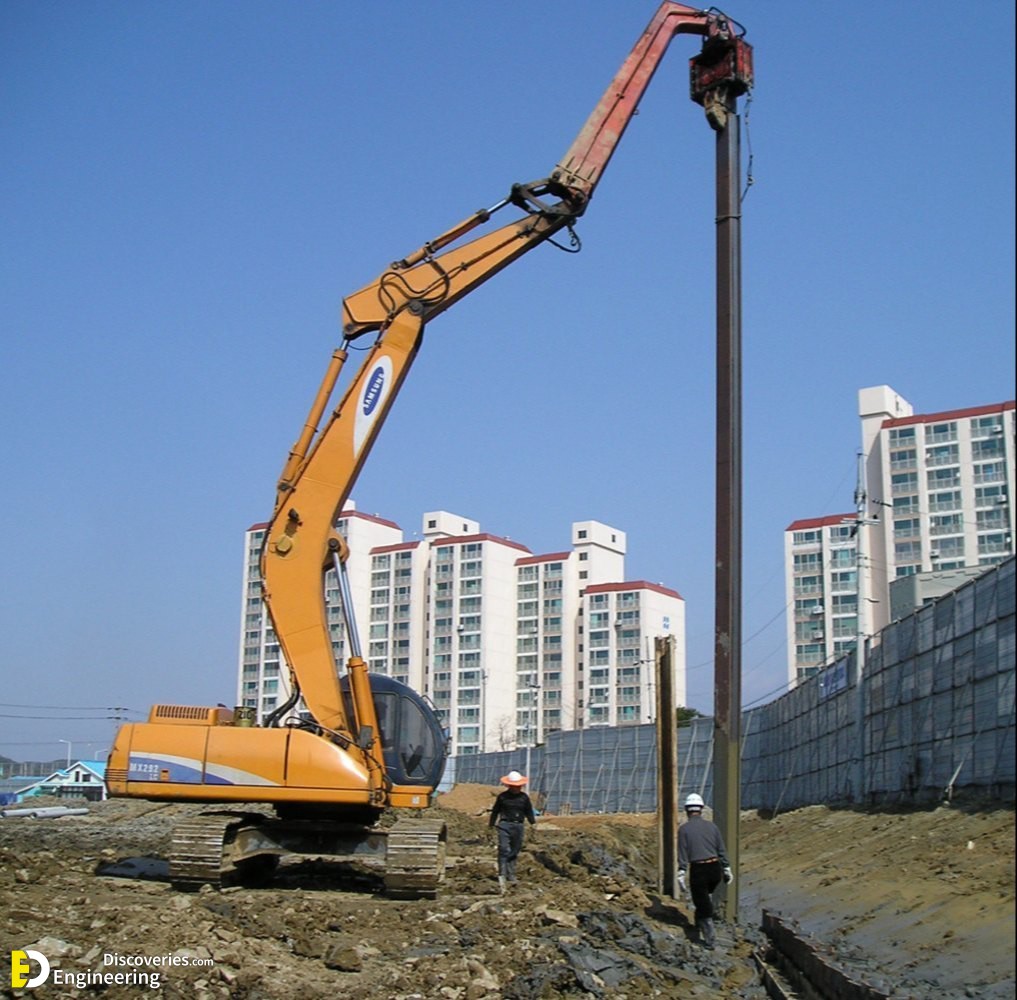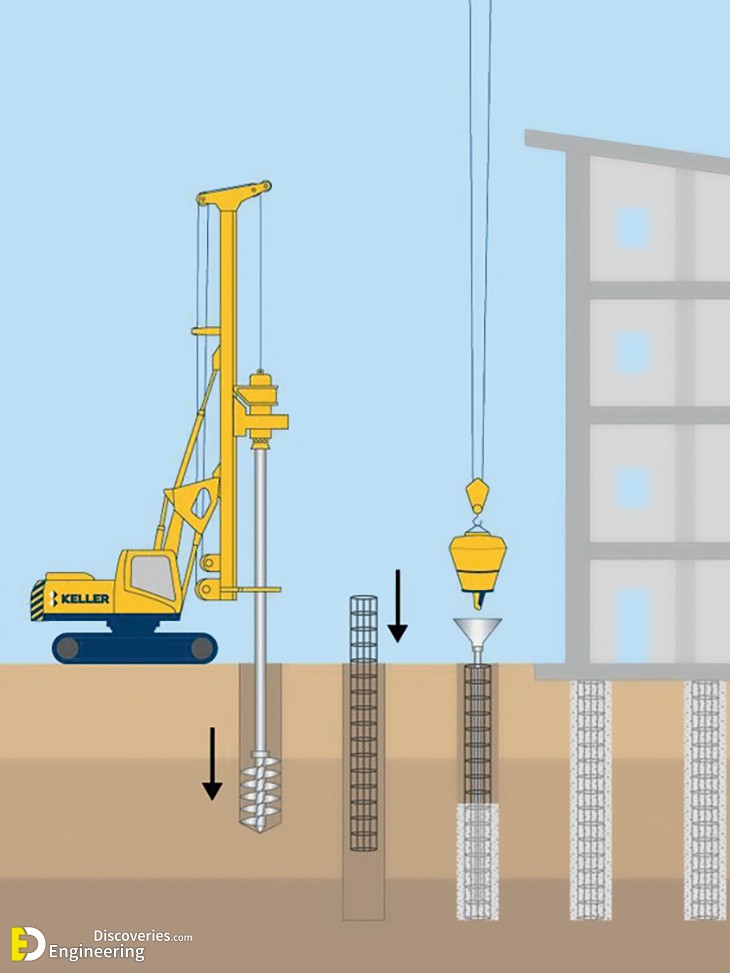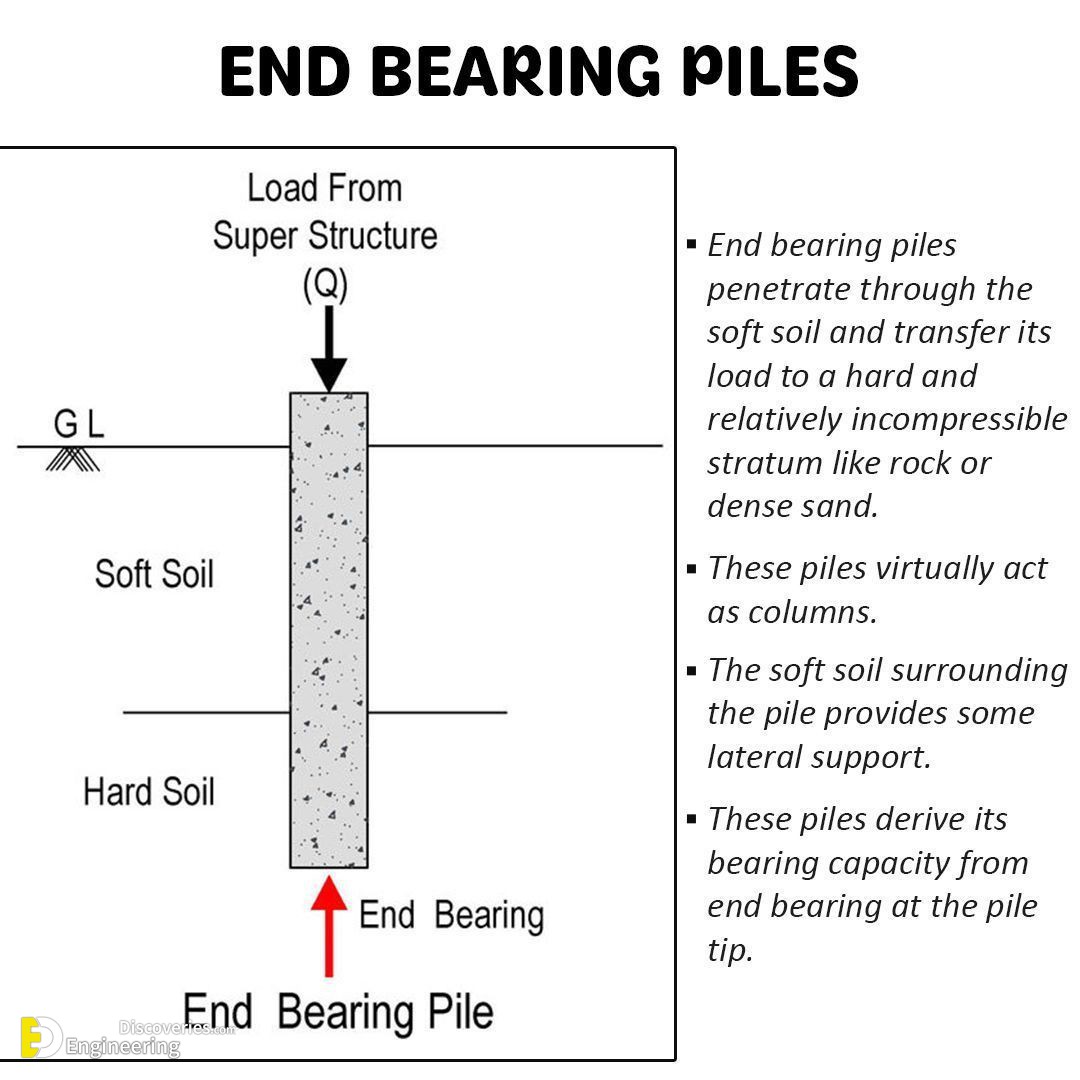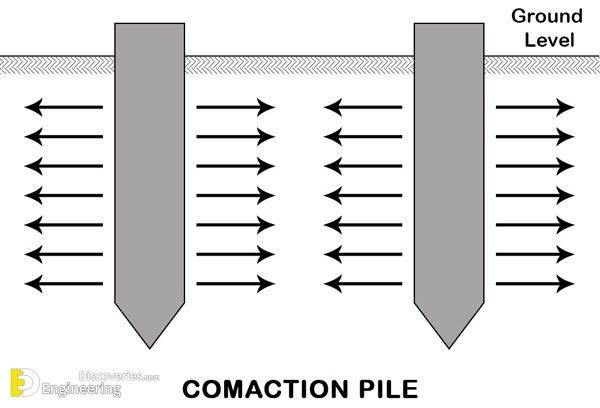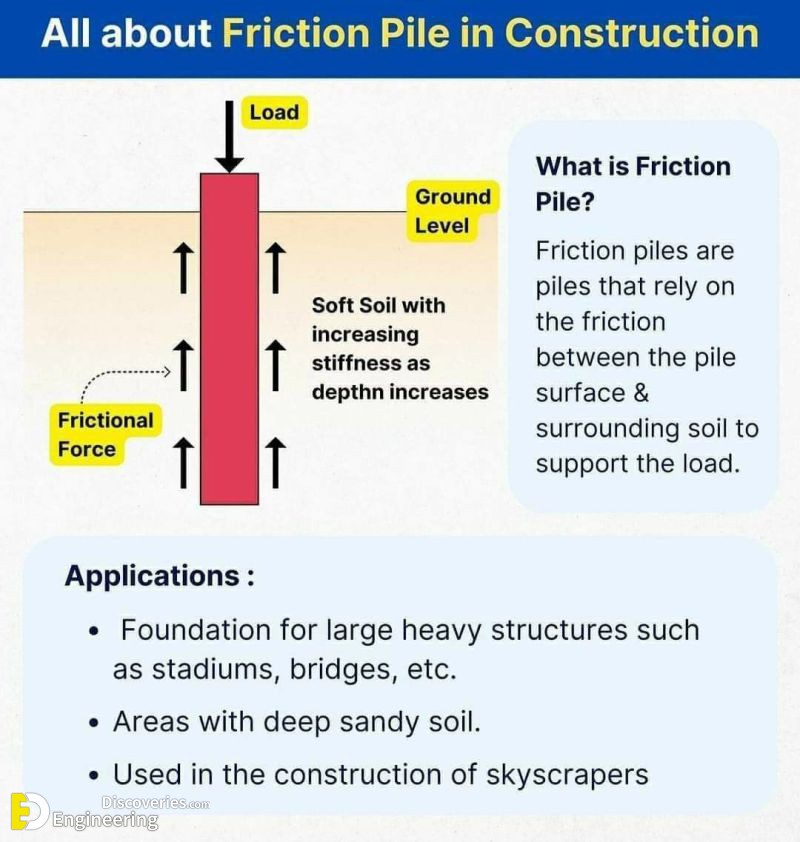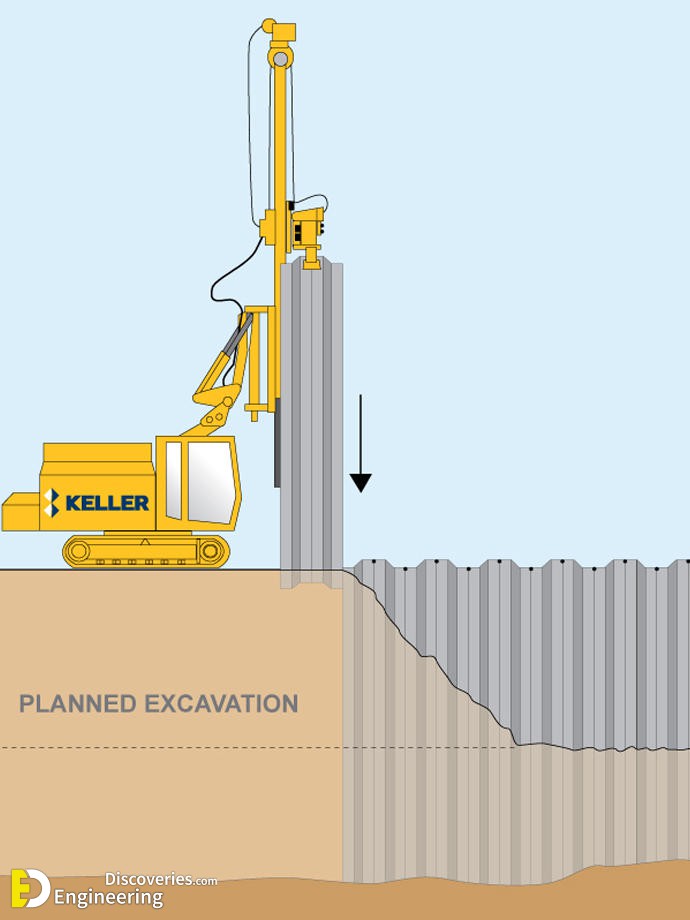A pile foundation is a type of deep foundation used to transfer loads from a structure through weak or compressible soils to a more competent and stable layer of soil or rock at depth. Piles are long, slender elements made of steel, concrete, or timber, and they are driven, drilled, or vibrated into the ground. Pile foundations are commonly used in situations where shallow foundations, such as spread footings, are not practical due to poor soil conditions.
Some common types of pile foundations are:
1. Driven piles: These are installed by impact into the ground using hammers. Driven piles are suitable for a wide range of soil conditions and are often used in projects with moderate to heavy loads.
2. Bored or Drilled Piles: Bored piles are created by drilling a hole into the ground and then filling it with concrete. They are often used in cohesive soils and for projects with high load requirements.
3. End Bearing Piles: The primary load transfer mechanism is through the resistance offered by the firm stratum at the pile toe. These are suitable for supporting heavy vertical loads and are often used when the upper soil layers are less competent.
4. Compaction Piles: These are short, non-displacement piles created by compacting soil. Compaction piles are used to densify loose or granular soils to improve their load-bearing capacity.
5. Friction Piles: These piles derive most of their load-bearing capacity from the friction between the pile and the surrounding soil. Friction piles are suitable for projects where the competent soil layer is at a significant depth.
6. Sheet Piles: Sheet piles are thin, interlocking steel sheets that are driven into the ground to form a continuous wall. They are commonly used for retaining walls, cofferdams, and in waterfront structures.
Click Here To See Detailing Of Reinforced Concrete Retaining Walls


